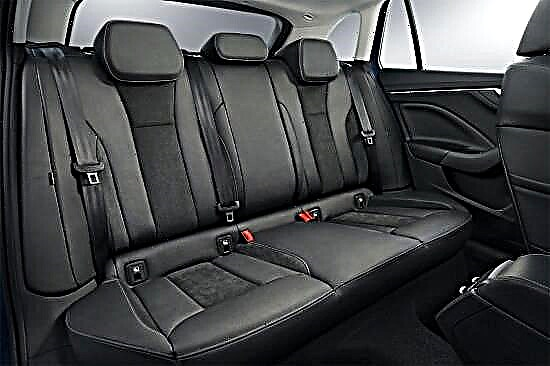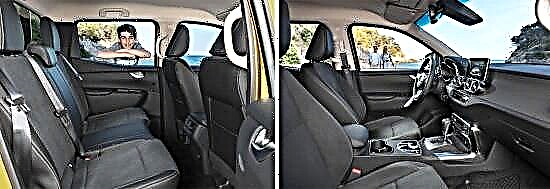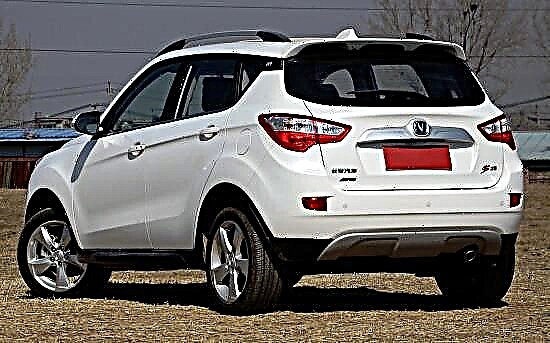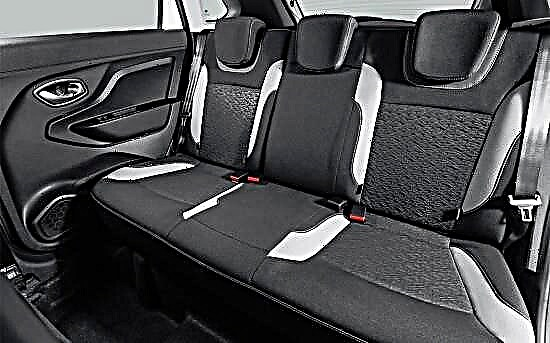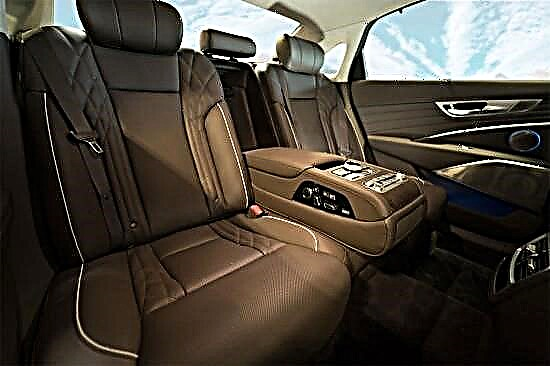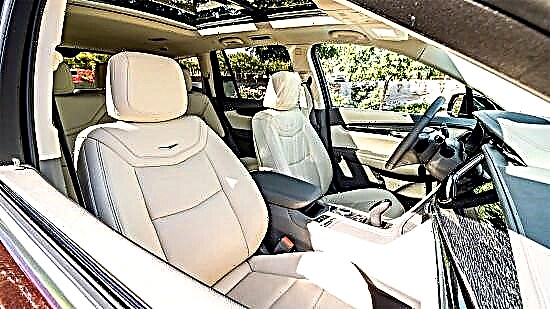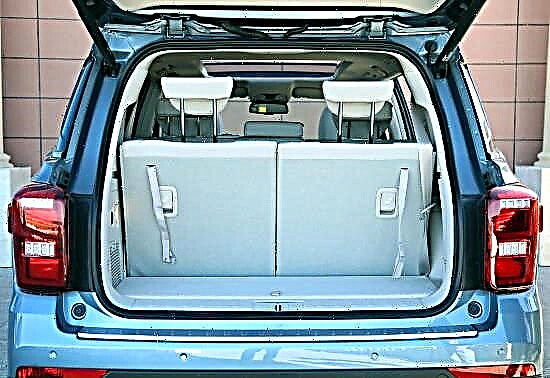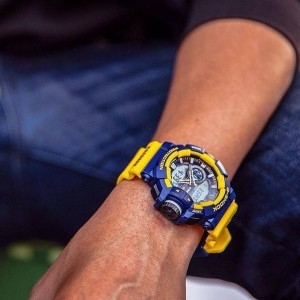Ratings of cars and auto products
Reviews, comparisons & tips for motorists
Most Russian car owners driving Japanese brands are not aware that those cars that are produced directly in Japan, in addition to the right hand drive, have several more features that distinguish them from European and American counterparts. In particular, these are car batteries, the standards for which in this country, as well as in a number of other Asian countries, differ somewhat from the generally accepted ones. Today we will introduce our readers to these differences, as well as the best models of Japanese batteries and their manufacturers.
Features of Japanese batteries
Among the most important differences between Asian car batteries and European batteries are the design (dimensions) of the case, as well as the shape and size of the terminal leads. In Asia, almost all goods, including car batteries, are subject to the JIS standard, which, with some stretch, can be called an analogue of the Soviet GOST. It is they who are guided by the manufacturers of Japanese car batteries.
Battery case
Car accumulators from the Land of the Rising Sun are narrower than European batteries, but at the same time slightly higher: the JIS standard provides that the height of the battery should be within 21.5-22.5 cm. There are differences in the shape of the battery cover: it is flat, with protruding on top of the terminals, while in Europe it is customary to place the part of the cover with terminal leads lower than the other half of the upper part - so that the upper part of the terminal is flush with the cover.
Finally, in Asia, it is customary to fix batteries in the compartment using an upper clamping bar, so they do not have a protrusion in the lower part of the case, which is found in batteries produced in the Old World - here they are attached using a lower bar.
Terminals
Batteries made in Japan assume the presence of batteries with three types of terminal leads:
- T1 - the terminals have the form of a cone tapering upward, while the negative terminal is thinner (13 mm versus 14.7 for the positive terminal). Usually, right-hand drive cars are equipped with just such batteries;
- T2 - batteries intended for export, they have a larger terminal diameter (17.9 mm for the negative terminal and 19.5 mm for the positive terminal). Such Japanese batteries are supplied to Russia;
- T3 - special terminals with a hole through which the wires are attached (they do not require terminals).
Marking
As for the accepted designations of batteries, which are usually indicated on the label, the JIS standard differs significantly from the European and even more so the Russian standard (GOST 0959/2002). The format and how to interpret such inscriptions will be described separately.
Marking Japanese batteries for cars
The six-character designation includes 4 information blocks:
- The 2 left digits are the code designation of the battery capacity (it differs from the nominal capacity!);
- the letter in the third position indicates the type of battery, which, in accordance with the JIS standard, can take values within A-H (they will differ in size, type of terminal leads and other parameters);
- the next 2 digits are the length of the battery case (in centimeters);
- the last character can be L or R and denotes the location of the negative terminal pin (when looking at the battery from the side of the label): L - on the left, R - on the right.
Note that when decoding Japanese batteries for cars, you need to take into account that type A is intended for motorcycles, types B / C / D are for cars, the rest are for trucks.
In Europe, the battery capacity is calculated by discharging the battery with a small current (the so-called 2-hour discharge current) until the voltage at the terminals drops to 10.5 V, in Japan and Korea - with an increased current, but for 5 hours, up to the same 10.5 V.
Here is a table that will help decipher batteries with Japanese (Asian) markings:
| Battery designation (JIS standard) | Capacity A / hour, Japanese / European standards | Starting current, A (measured at t = -18 ° C) |
| 30A19L | 24/30 | 280 |
| 38B20L | 28/35 | 340 |
| 40B19L | 30/37 | 330 |
| 50B24R | 36/45 | 390 |
| 55D23R | 48/60 | 355 |
| 65D23R | 52/65 | 420 |
| 75D26R | 60/75 | 490 |
| 80D23L | 60/75 | 600 |
| 95D31R | 65/80 | 625 |
| 105D31L | 73/90 | 675 |
| 120E41L | 90/110 | 810 |
The best Japanese battery manufacturers and their products
We bring to your attention a rating of the best manufacturers of car batteries from Japan, sample of 2021.
Furukawa battery
In the Russian Federation, and throughout the entire post-Soviet space, this Japanese battery brand is the most famous. The company produces batteries for all types of vehicles: motor vehicles (Moto series), light vehicles (7000/9000 series, Super Nova), there is also a series of batteries for trucks (Specialist).
FB 9000
The 9000th series is considered the best-selling series in the world, which is facilitated by the following competitive advantages:
- use in the manufacture of plates of special alloy C21, which increases the heat resistance of the electrodes;
- the use of a special mold for casting, reminiscent of a book, which increases the strength properties of negative plates and their ability to withstand deformation effects;
- double-layer lid minimizes electrolyte losses, increasing battery life;
- the manufacturer declares the ability of the batteries of this series to work in sufficiently severe frosts;
- FB 9000 are equipped with an explosion protection function;
- all batteries in the series have a charge indicator.
The lineup of the series:
| Name | Starting current, A | Capacity, A / hour (20-hour discharge) |
| 46B19R | 370 | 45 |
| 70B24R | 500 | 55 |
| 85D23R | 590 | 70 |
| 110D26R | 760 | 80 |
| 125D31R | 840 | 92 |
FB 7000
A series of batteries, especially resistant to negative temperatures. It was designed using computer simulation, which made it possible to optimize the composition of the electrolyte, improving its electrochemical characteristics.
Features of the FB 7000 series battery:
- alloying of lead electrodes with calcium, which made it possible to increase the battery life by 1.5 times, up to 5-6 years of operation;
- the use of caps of a special design, making the battery explosion impossible.
The lineup of the series:
| Name | Starting current, A | Capacity, A / hour (20-hour discharge) |
| 60B24R | 470 | 50 |
| 80D23R | 550 | 70 |
| 90D26R | 650 | 75 |
| 115D31R | 780 | 90 |
FB Super Nova
The most popular series among domestic car owners. Features of the Super Nova battery:
- optimal ratio of quality to cost;
- the use of calcium as an additive to lead, which made it possible to minimize electrolyte losses and battery self-discharge;
- alloying of electrodes has increased their resistance to vibration;
- the average resource is 5-7 years.
The lineup:
| Name | Starting current, A | Capacity, A / hour (20-hour discharge) |
| 40B19R | 330 | 40 |
| 46B24R | 350 | 45 |
| 55B24R | 440 | 50 |
| 55D23R | 360 | 60 |
| 75D23R | 530 | 65 |
| 80D26R | 590 | 70 |
| 95D31R | 63 | 80 |
Panasonic
The brand, which does not need an introduction, turns out, in addition to household appliances, to manufacture rechargeable batteries that are supplied to the domestic market relatively recently - the first deliveries were made a little more than ten years ago. No one doubts the highest quality of the batteries produced under this trademark, but it should be admitted that the cost of these batteries is higher than that of competitors.
Benefits of Panasonic rechargeable batteries:
- rather high values of starting current, provided by a noticeable decrease in internal resistance;
- the electrodes are placed in a closed, almost completely sealed separator;
- increased capacity of the plates;
- the cladding technology is used, which allows more active exchange of active substances between the grating and the electrodes;
- doping of lead with calcium and tin to minimize electrolyte losses and self-discharge of the battery.
Batteries of two lines are imported to Russia:
- MF Standard, manufactured in Thailand and with more affordable price tags;
- SP Premium Grade. Made in Japan, have a long service life due to the coating of the electrodes with a thin layer of silver.
Most Japanese car brands equip their cars with Panasonic batteries as standard - Honda, Nissan, Toyota, Subaru, Lexus, Mazda.
Hitachi
Another universal and popular Japanese brand that produces, in addition to an extensive list of consumer electronics, car batteries.
Features of the battery of this brand:
- doping of the plates with calcium, the use of Expanded Metal technology, which improves the retention of the active mass on the electrodes in order to increase the starting current;
- a separator of the "envelope" type is used, due to which a larger number of plates can be placed in a standard case;
- the use of plugs with a flame arrester and a completely sealed case eliminates electrolyte leakage and battery explosion;
- terminal leads are produced by cold rolling, which makes them more resistant to vibrations and other mechanical influences.
In Russia, the most popular is the V-Spec battery line. The following models are available in domestic stores:
| Name | Starting current, A | Capacity, A / hour (20-hour discharge) |
| 46B19R | 390 | 45 |
| 65B24R | 500 | 55 |
| 80D23R | 590 | 65 |
| 85D26R | 630 | 65 |
| 105D31R | 725 | 80 |
GS Yuasa
One of the oldest Japanese battery brands. It is currently a consortium of two companies, Japan Storage Battery (on the market since 1919) and Yuasa Corporation, which has been manufacturing batteries since 1920.
Features of the GS Yuasa automotive battery technology:
- calcining the plates to improve conductivity and reduce the time required for the plates to accumulate charge;
- reduced rate of self-discharge current, contributing to a longer storage of the battery;
- increased battery life, providing about 30-50 thousand engine starts.
Two of the three lines, representing batteries for light vehicles, are focused on the domestic market. This is GranCruise Standard / High Class. The Cool Ace line is designed for the European market and has the corresponding characteristics.
Alaska
Among the best Japanese battery manufacturers is Seban Denchi, which produces car batteries under the Alaska brand. The plant of the company is located in Japan, it is a modern enterprise equipped with high-tech equipment, allowing to produce up to 8,000,000 batteries per year.
Features of Alaska battery:
- the use of calcium technology (Ca-Ca) for the manufacture of plates doped with selenium, which made it possible to increase the rating of the starting current and reduce the loss of electrolyte;
- thanks to the special design of the plates, it was possible to increase their resistance to shattering due to constant vibration loads;
- the use of frost-resistant polypropylene in the manufacture of the battery case;
- wide range of operating temperatures (from minus 40 to plus 60 degrees Celsius).
All Alaska battery models are equipped with a state of charge indicator. Batteries of this brand are installed on many models of Japanese automakers.
Conclusion
In our country, the most popular are Furukawa Batteries, which have an excellent cost-to-quality ratio. They are characterized by a large resource (up to 7 years), and it is no coincidence that many motorists are active adherents of this particular brand.
Panasonic batteries have no worse performance, they last 7-8 years, but their prevalence is held back by their higher cost.
In general, all Japanese batteries have above average price tags, which is justified by their high quality. As for the claimed resistance to negative temperatures, frosts of the order of 25-30 degrees are critical even for frost-resistant models, but it should be recognized that this range is critical for the vast majority of batteries, regardless of the brand.

